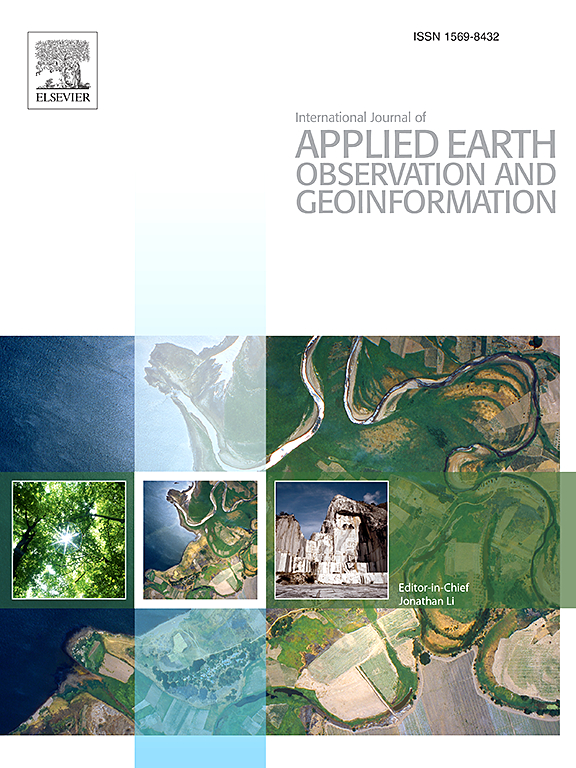Density uncertainty quantification with NeRF-Ensembles: Impact of data and scene constraints
IF 7.6
Q1 REMOTE SENSING
International journal of applied earth observation and geoinformation : ITC journal
Pub Date : 2025-02-24
DOI:10.1016/j.jag.2025.104406
引用次数: 0
Abstract
In the fields of computer graphics, computer vision and photogrammetry, Neural Radiance Fields (NeRFs) are a major topic driving current research and development. However, the quality of NeRF-generated 3D scene reconstructions and subsequent surface reconstructions, heavily relies on the network output, particularly the density. Regarding this critical aspect, we propose to utilize NeRF-Ensembles that provide a density uncertainty estimate alongside the mean density. We demonstrate that data constraints such as low-quality images and poses lead to a degradation of the rendering quality, increased density uncertainty and decreased predicted density. Even with high-quality input data, the density uncertainty varies based on scene constraints such as acquisition constellations, occlusions and material properties. NeRF-Ensembles not only provide a tool for quantifying the uncertainty but exhibit two promising advantages: Enhanced robustness and artifact removal. Through the mean densities, small outliers are removed, yielding a smoother output with improved completeness. Furthermore, applying a density uncertainty-guided artifact removal in post-processing proves effective for the separation of object and artifact areas. We conduct our methodology on 3 different datasets: (i) synthetic benchmark dataset, (ii) real benchmark dataset, (iii) real data under realistic recording conditions and sensors.
求助全文
约1分钟内获得全文
求助全文
来源期刊

International journal of applied earth observation and geoinformation : ITC journal
Global and Planetary Change, Management, Monitoring, Policy and Law, Earth-Surface Processes, Computers in Earth Sciences
CiteScore
12.00
自引率
0.00%
发文量
0
审稿时长
77 days
期刊介绍:
The International Journal of Applied Earth Observation and Geoinformation publishes original papers that utilize earth observation data for natural resource and environmental inventory and management. These data primarily originate from remote sensing platforms, including satellites and aircraft, supplemented by surface and subsurface measurements. Addressing natural resources such as forests, agricultural land, soils, and water, as well as environmental concerns like biodiversity, land degradation, and hazards, the journal explores conceptual and data-driven approaches. It covers geoinformation themes like capturing, databasing, visualization, interpretation, data quality, and spatial uncertainty.
 求助内容:
求助内容: 应助结果提醒方式:
应助结果提醒方式:


